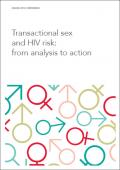Publications on Key Populations
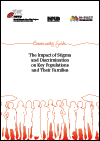
Societal stigma and punitive legal frameworks often severely impede key populations’ rights to raise families free from interference and discrimination. The experiences of key population groups (gay, bisexual and other men who have sex with men, people who use drugs, sex workers, and transgender people) are diverse, and are informed by varying levels of criminalisation, stigma and discrimination, and individual factors such as socioeconomic status, gender, race, and health status. This paper explores these challenges, and provides recommendations for policymakers.
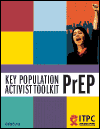
This toolkit focuses on preventing HIV among key populations – sex workers, people who inject drugs, transgender people, and gay men and other men who have sex with men. Globally, key populations are 10-24 times more at risk of contracting HIV than adults in the general population.3 In 2015, infections among key populations accounted for 36% of all new infections.

This report describes the process and the results of the size estimation study of key populations (KPs) in Sri Lanka, which was based on the methods of the geographical mapping with enumeration and the multiplier, as well as the results of the consensus-building workshop that utilised the Delphi process to arrive at the final population size estimates (PSE). Following KPs were included in the size estimation study: female sex workers (FSWs), men who have sex with men (MSM), male sex workers (MSW), transwomen, people who inject drugs (PWID) and beach boys (BBs).
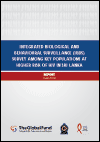
HIV prevalence in Sri Lanka is less than 0.1%, characterized as a low-level epidemic, according to the National STD and AIDS Control program (NSACP). Data amongst key populations is required to evaluate and guide national responses, and currently minimal data is available for key populations in Sri Lanka. Two previous surveys, a behavioural surveillance survey undertaken in 2006/7 and an integrated biological surveillance survey (IBBS) in 2014/15, showed low HIV and syphilis prevalence across all key populations with presence of risk behaviour and low knowledge around HIV.

This report describes the process and the results of the size estimation study of key populations (KPs) in Sri Lanka, which was based on the methods of the geographical mapping with enumeration and the multiplier, as well as the results of the consensus-building workshop that utilised the Delphi process to arrive at the final population size estimates (PSE). Following KPs were included in the size estimation study: female sex workers (FSWs), men who have sex with men (MSM), male sex workers (MSW), transwomen, people who inject drugs (PWID) and beach boys (BBs).
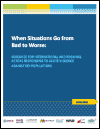
As the violence directed at members of key populations most affected by HIV — gay, bisexual, and other men who have sex with men; people who inject drugs; sex workers; and transgender people — intensifies and becomes “acute” in many parts of the globe, this brief offers guidance to international and regional actors who wish to be part of an effective and coordinated response.









